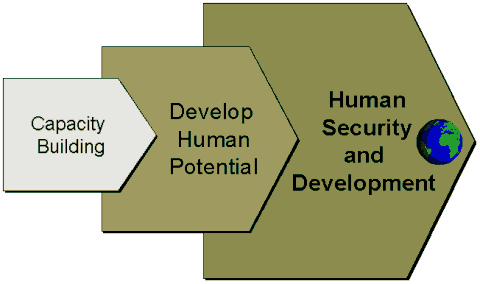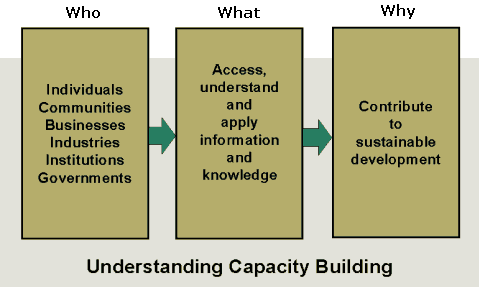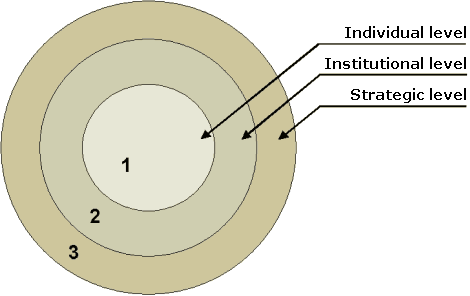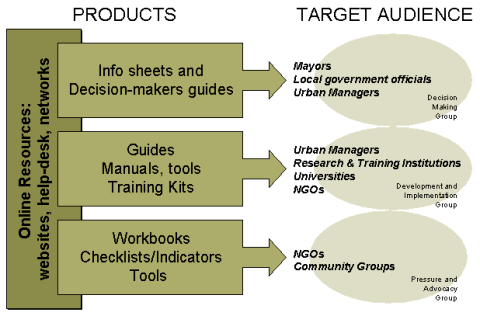Capacity building is the starting point, and a necessary ingredient for
success of many global goals such as human security and development.
Well developed and implemented capacity building initiatives lead to the
effective development of human potential, which eventually results in
better human security and all-round development.
 To operationalize this policy, GDRC looks at capacity building as a process that involves value added instruction, the training of trainers, activities with multiplier effects, and networking. This involves both institutional capacity-building, as well as human capacity-building. The 15 programmes of GDRC targets [WHO] individuals, communities, businesses, industries, institutions/organizations and governments at different levels of decision-making and governance; [WHAT] in order to access udnerstand and apply information and knowledge; [WHY] in being able to contribute to sustainable development. 
 This is inspired from the need for a holistic overview of ecosystems that sustain all life forms; a basic education in social sciences and systems; skills in gathering information; and finally the capacity to identify problems - understanding a problem is part of finding the solution  |
Public health is the science and art of preventing disease, prolonging life and promoting health through the organized efforts and informed choices of society, organizations, public and private, communities and individuals. Epidemiologists help with study design, collection and statistical analysis of data, and interpretation and dissemination of results (including peer review and occasional systematic review).
Epidemiologist

Epidemiologists help with study design, collection and statistical analysis of data, and interpretation and dissemination of results (including peer review and occasional systematic review). Epidemiology has helped develop methodology used in clinical research, public health studies and, to a lesser extent, basic research in the biological sciences
Senin, 07 Oktober 2013
Capacity Building Policy
Langganan:
Posting Komentar (Atom)
Tidak ada komentar:
Posting Komentar